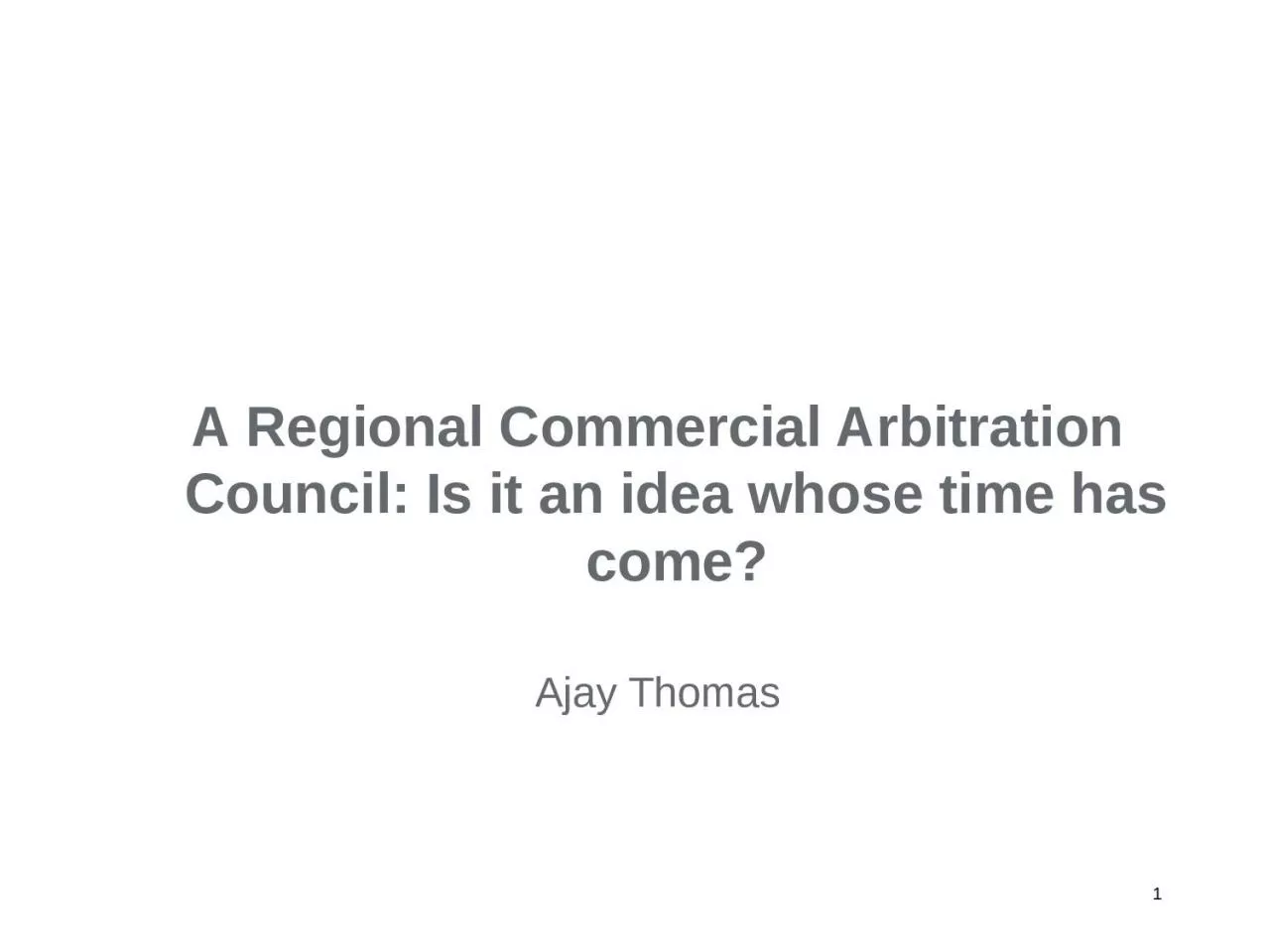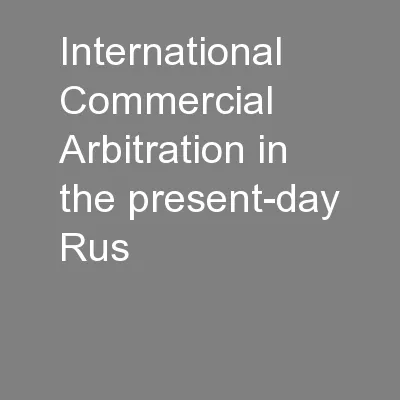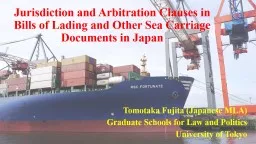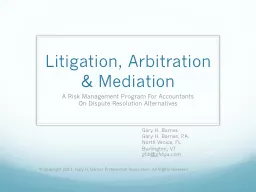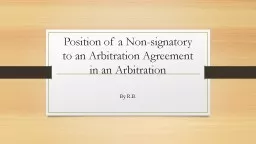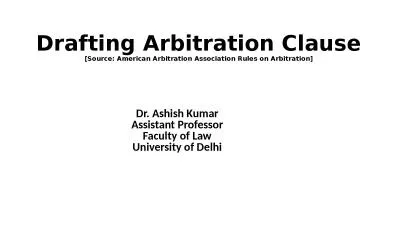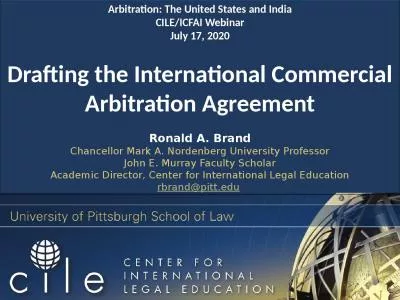PPT-A Regional Commercial Arbitration Council: Is it an idea whose time has come?
Author : lauren | Published Date : 2024-01-03
Ajay Thomas Why arbitration The future of arbitration is therefore bright perhaps because the future of litigation is not Fali Nariman Why Arbitration Advantages
Presentation Embed Code
Download Presentation
Download Presentation The PPT/PDF document "A Regional Commercial Arbitration Counci..." is the property of its rightful owner. Permission is granted to download and print the materials on this website for personal, non-commercial use only, and to display it on your personal computer provided you do not modify the materials and that you retain all copyright notices contained in the materials. By downloading content from our website, you accept the terms of this agreement.
A Regional Commercial Arbitration Council: Is it an idea whose time has come?: Transcript
Download Rules Of Document
"A Regional Commercial Arbitration Council: Is it an idea whose time has come?"The content belongs to its owner. You may download and print it for personal use, without modification, and keep all copyright notices. By downloading, you agree to these terms.
Related Documents

